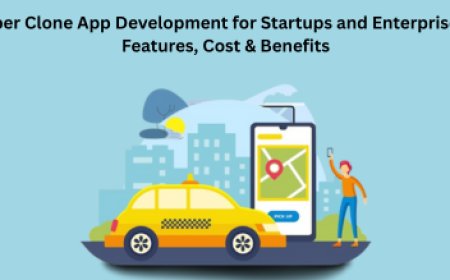Inside the Neural Mind: Building the Next Generation of Language Models
This article delves into how modern AI systems—specifically Large Language Models (LLMs)—are engineered to understand and generate natural language.
Introduction

Large Language Modelsare no longer just research experimentstheyre core infrastructure. They summarize emails, write code, generate art prompts, tutor students, and even support scientific discovery. But what does it really take to build one?
Underneath the polished interfaces of tools like ChatGPT, Claude, and Gemini lies a multilayered neural system that processes language with astonishing depth. This article takes you inside the development of these models, exploring the science and engineering behind how machines are taught to think in words.
1. Neural Foundations: What a Language Model Actually Is
At a fundamental level, a language model is a neural network trained to recognize patterns in language. It doesnt "understand" words the way we dobut it does learn statistical relationships between them.
For instance, it learns that peanut butter and ___ is usually followed by jelly. Over time, with enough examples, the model develops internal representations of grammar, semantics, and even common sense.
Modern LLMs contain billions of parametersadjustable weights that encode what the model has learned. These parameters are updated over time as the model sees more data and corrects its predictions.
2. The Architecture: Why Transformers Matter
The breakthrough behind todays language models is the transformer architecture, which uses self-attention mechanisms to evaluate relationships between all tokens (words, subwords) in a sequence.
This means the model can:
-
Understand context beyond just the last few words
-
Handle complex sentence structures
-
Learn long-range dependencies, like pronoun references and cause-effect relationships
A transformer model includes layers of multi-head attention, feed-forward neural nets, and normalization operations. These layers are stacked deepdozens or even hundreds of timesto build progressively more abstract understandings of language.
3. Feeding the Model: Data Collection and Tokenization
Training a model starts with dataand lots of it. Developers gather data from:
-
Books and literature
-
News websites and encyclopedias
-
Online discussions, blogs, and forums
-
Code repositories and scientific papers
This raw text is then:
-
Filtered for quality and safety
-
Deduplicated to prevent repetition
-
Tokenized into numerical units (tokens) the model can process
The tokenizer converts sentences into strings of integers, which are the models actual inputs. A typical model may see trillions of tokens during training.
4. Learning Language: Training with Scale
Training an LLM is one of the most resource-intensive computing tasks in AI.
The process includes:
-
Forward pass: The model makes predictions for the next token in a sequence
-
Loss calculation: The error between prediction and actual result is measured
-
Backpropagation: Gradients are computed and used to adjust parameters
-
Iteration: This loop runs billions of times, updating the model step by step
Training requires:
-
Thousands of GPUs or TPUs
-
Parallelized compute frameworks like DeepSpeed or Megatron
-
High-speed networking, massive storage, and fault-tolerant design
The model slowly becomes fluentable to predict, reason, and compose.
5. Beyond Raw Output: Fine-Tuning and Instruction Following
Once pretrained, an LLM is impressivebut unrefined. It can complete sentences but may not follow instructions or behave helpfully. Thats where fine-tuning comes in.
Steps include:
-
Supervised fine-tuning: Training on curated question-answer or task-specific pairs
-
Instruction tuning: Teaching the model to respond to natural commands like "summarize this email" or "explain this concept"
-
Reinforcement Learning with Human Feedback (RLHF): Having human evaluators rank outputs and guide future behavior
This transforms a model from a passive predictor to an interactive assistant.
6. Alignment and Safety: Keeping Models on Track
With great power comes great risk. LLMs must be aligned to human values to avoid harmful, biased, or dangerous behavior.
Alignment practices include:
-
Toxicity filtering: Removing or suppressing unsafe content
-
Bias detection: Testing for demographic, political, or cultural skew
-
Red teaming: Intentionally provoking edge cases to find weaknesses
-
Guardrails: Rule-based systems that monitor outputs in real time
Developers also document model limitations so users know where caution is warranted.
7. From Model to Application: Deployment and Integration
A finished model can be accessed in many ways:
-
Web apps (e.g., chatbots, writing tools)
-
Developer APIs
-
Embedded AI in productivity suites
-
Custom integrations for enterprise use
Challenges at this stage include:
-
Managing compute cost and latency
-
Preserving privacy and user data
-
Ensuring up-to-date knowledge via retrieval or tools
-
Supporting global languages and accessibility
Ongoing feedback from users plays a vital role in refining the product post-launch.
8. The Next Frontier: Memory, Multimodality, and Agents
LLMs are evolving beyond static responders into dynamic AI agentssystems that can:
-
Remember user history across sessions
-
Plan multi-step actions
-
Call external tools and APIs
-
Interact with images, videos, and code
Multimodal LLMs like GPT-4o and Gemini can already process text + vision. Soon, theyll handle voice, documents, and real-world tasks with context and autonomy.
Were moving from models that generate language to ones that use language to act, solve problems, and collaborate.
Conclusion
Building a language model is not just about training a neural netits about encoding knowledge, behavior, safety, and utility into a single system. From the first scraped sentence to the final polished interface, every step reflects deliberate engineering and design.
As we build more powerful models, the focus is shifting from what they can say to why they say itand how to ensure they say the right things for the right reasons.
Understanding the process behind LLMs helps us appreciate both their promise and the responsibility that comes with creating them.

































